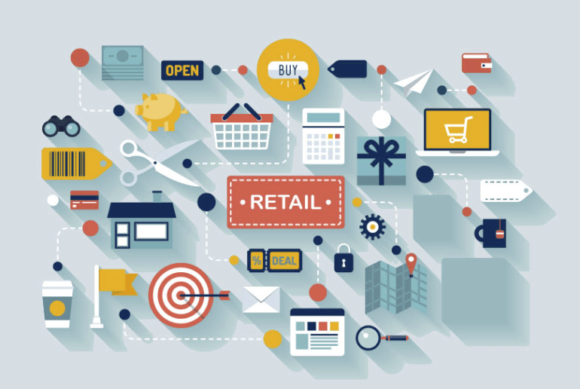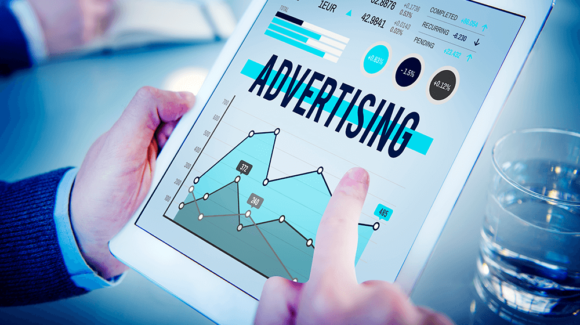


January 27, 2023
Eyes4Research
If there is one thing that brands have learned while navigating the social media landscape, it’s that social media strategy is not a ‘set it and forget it’ endeavor. It requires constant attention– to refine strategy, measure if your strategy is working, and to stay on top of new platforms and how they are being used. In order to stay competitive and remain current, it’s important that your team knows which social media platforms your brand should be using in the new year.
Here are 4 social media platforms, including a couple of new ones, that your brand should consider adding to your social strategy in 2023.
TikTok
If an influencer campaign makes sense for your brand, either as part of a general strategy or for a specific initiative, TikTok is a must. Remember Vine? TikTik is a more robust version of that early version of the quick, often funny videos that went viral, with stronger engaged communities. TikTok also has several layers of niche audiences and sub-audiences, and the ‘Duets’ and ‘Stitch’-style videos are a brilliant way to reference other videos, allowing for an easy way to extend the reach of your videos. TikTok allows for endless creativity, with tools that make it simple to add music, filters, and other effects that do not require a professional videographer.
But the real power of TikTok that has evolved over the past few years is its ability to influence buying decisions. The potential ad reach on TikTok for users 18+ is 1.02 billion users, making TikTok Shop and TikTok Spark Ads a no-brainer for brands looking to influence purchase decisions.
Discord
For brands looking to cultivate more intimate conversations with their audience, Discord is a platform worth considering. It is a free voice, text, and video app that makes it easy to connect with individuals, groups as well as brands. It is already being used extensively by gamers who use the app to maintain larger group chats and spilt off into smaller, more specialized side conversations. Brands interested in fostering more inclusive communities as part of their brand story could find this aspect of Discord particularly useful, as an LGBTQ+ community can function as a larger group, as well as be split into smaller communities divided by region, age, etc., as conversations can be divided into smaller forums. There is no limit on how many people can be part of the communities on Discord, which along with the fact that it is free, makes it a perfect test ground for brands looking to build a deeper connection with their audience.
Shuffles by Pinterest
We already know that Pinterest is great for building mood boards and establishing a visual brand identity. But with Shuffles, users can create collages that can be cut out and animated. Shuffles is easy to use and can be accessed through a Pinterest account after logging in and following a series of prompts. Shuffles already has a devoted fan base, with the hashtag #shufflesbypinterest boasting over 9 million views on TikTok. People are using this hashtag to showcase their work, and marketers are already sharing the benefits of using the platform with brands. Brands can create these videos on Pinterest and then share them on other platforms like TikTok, YouTube Shorts, and Instagram Reels.
BeReal
One platform that might be a bit trickier for brands to master to the best effect is BeReal. BeReal is a new app that is meant to be more authentic and a reaction to apps like Instagram, where users have grown weary of overly curated posts and images. This is how it works: randomly throughout the day, every day, users are sent a notification to snap quick two photos of themselves. One with their front camera, and one with their back camera. Users are only given two minutes to take their photos, so there is no time to curate, no time for anything other than what you are doing, exactly at that moment, regardless of where you are.
The trick for brands who choose to adopt BeReal as part of their marketing strategy will be how to employ its features without turning off users. But there are ways that marketers can use this platform for user-generated content, both externally by tapping into their audience and internally by having employees snap day-in-the-life photos, giving their audience a glimpse behind the scenes.
There’s no doubt that social media is a powerful tool that brands can use to cultivate and maintain connections with their audiences. It is also an effective way to get insights into how products and services can be improved. Brands looking for a new way to engage with their customers should consider adding these platforms to their social media strategies.
Read more about branding and marketing on the Eyes4Research blog. Eyes4Research also has everything you need to collect high-quality insights from consumers. Our panels are comprised of B2B, B2C, and specialty audiences ready to participate in your next research project. Learn more about our specialty panels here.

January 27, 2023
Eyes4Research
Regardless of your area of interest or expertise, there is probably a podcast to dive into while you are working away at your desk. For marketers, there are a wealth of podcasts to choose from, all hosted by experts who keep marketing directors, executives, and managers up to date on the latest news and trends in the industry. Here are 10 podcasts that marketing professionals should add to their playlists this year.
Behind the Numbers by eMarketer
Behind The Numbers showcases the impact of marketing on the business world. Its mix of in-depth interviews and short segments demonstrates how marketing impacts both the industry and individuals. In addition, Behind the Numbers shows a clear picture of what the modern state of digital media, commerce, and promotion currently looks like. They recently hit the 500th episode mark and are consistently listed among the best marketing podcasts.
Call to Action
A weekly podcast from the digital marketing experts at Unbounce, Call to Action covers the basics of digital marketing best practices. Episodes run about 15-30 minutes in length and regularly features practical advice and valuable tips from industry experts. The archived episodes offer a treasure trove of information, and the podcast has been called “a breath of fresh air” by marketing insiders.
Marketing Over Coffee
In Marketing Over Coffee, hosts Christopher Penn and John Wall discuss pertinent topics like SEO, social media marketing, and marketing project management. In addition to being marketing experts, they are local coffee shop owners, as well. They even record every episode in a local coffee shop. Marketing Over Coffee features interviews with pro marketers and premiers new episodes every Thursday. There is also an opportunity for listeners to submit questions ahead of time and have them answered in a future episode.
Online Marketing Made Easy
Created by Amy Porterfield, Online Marketing Made Easy helps small businesses launch their online marketing strategies. She presents actionable advice and step-by-step instructions that will help entrepreneurs overcome common challenges for small business owners. More seasoned marketers will appreciate a refresher course on the basics as well as learning detailed insider information from Porterfield’s case studies.
The Social Media Examiner Podcast
Michael Stelzner, the CEO of Social Media Examiner, takes listeners through the paces of learning how to enhance their company’s social media profiles. On the podcast, Stelzner features 45-minute interviews with industry experts each week. Recent topics include advertising on TikTok and Facebook retargeting tips. In addition to Social Media Examiner Podcast, Stelzer also hosts Social Media Talk Show every Friday evening to discuss the latest social media news and trends that every marketer should know about.
The Hustle and Flowchart Podcast
In this podcast, hosts Joe and Matt are marketers who teach their listeners about audience building and driving website traffic. They focus on creating and implementing marketing processes that are ideal for marketers looking to automate their work. Their information is presented in quick-to-digest actionable tips, lending itself to easy note-taking while listening.
Seeking Wisdom
Hosted by Drift’s David Cancel, Seeking Wisdom features the insider marketing secrets of successful startups. The podcast’s tagline, ‘Want to Become Better Every Day?’ Informs the philosophy of the content by offering valuable information so that listeners can take immediate action for their own marketing strategies. Most episodes are less than an hour, with several archived episodes clocking in at just under 20 minutes.
The Tropical MBA
Location-independent professionals are the focus of The Tropical MBA, hosted by Dan and Ian. On this podcast, Dan and Ian talk with their guests about their stories of creating successful businesses. This podcast is ideal for remote marketing employees and independent contractors who need a little extra advice on managing their day-to-day workflow.
The Science of Social Media
The Science of Social Media is the perfect podcast for anyone interested in learning more about the behind-the-scenes details of social media marketing. Hosted and created by the social media tool Buffer, the podcast often features questions from listeners and discusses topics such as how to develop a social media strategy, how to implement it successfully, and how to measure it all. This podcast currently boasts more than 25K listeners and a 4.7/5 rating on Apple.
Perpetual Traffic
This top marketing podcast dives into how to drive sales and generate leads on social media platforms. Hosted by the experts at digitalmarketer.com, Perpetual Traffic teaches listeners how to elevate their company’s social media presence and boost revenue by presenting real-life marketing campaign models. Topics include advertising on Snapchat, Smart Shopping on Google, and product launch marketing strategy.
Read more about the marketing industry on the Eyes4Research blog. Eyes4Research also has everything you need to collect high-quality insights from consumers. Our panels are comprised of B2B, B2C, and specialty audiences ready to participate in your next research project. Learn more about our specialty panels here.

January 26, 2023
Eyes4Research
Among other things, 2022 will be remembered as the year that saw food prices (and prices of other goods) spike through the roof and caused many families to tighten their budgets in a way that hasn’t been seen in decades. And as if sky-high grocery prices weren’t enough, shortages of everyday necessities like butter, baby formula, tomatoes, and turkey tested consumers’ patience throughout the year. Now, at the beginning of the new year, consumers are paying much more for a formerly inexpensive and reliable kitchen staple as an egg shortage has taken hold.
Why There Is An Egg Shortage Right Now
In addition to an increase in fuel, packaging, and chicken feed prices, the current shortage of eggs can be partially blamed on an especially contagious outbreak of avian flu that has already killed tens of millions of chickens across the nation and in other countries. According to the U.S. Department of Agriculture, the outbreak happened over a year ago in February 2022. It is the deadliest outbreak of avian flu in the nation’s history and led health officials to ‘depopulate’ or slaughter close to 60 million chickens by the end of 2022, due to the virulence of this specific strain of the disease.
The scope of the outbreak in the U.S. has been uneven, with some states being hit harder than others. Colorado and California have both suffered deep losses in their egg production. Additionally, California is one of several states that have banned the sale of eggs from caged chickens, which is better for the chickens, of course, but it does affect supply significantly.
Less Supply = More Expensive
It’s no surprise that a limited supply of eggs means that consumers will be paying more for them for the foreseeable future. The price of a dozen eggs has risen in 47 states and by the end of 2022, egg prices rose 49% nationwide. According to the Los Angeles Times, eggs that only cost $2.35 at the end of December 2021, cost shoppers $7.37 just a year later. A now-viral post on Reddit shocked readers when a Walmart shopper shared a photo of a shelf of eggs that listed a price of $27 for 5 dozen eggs. The increase in prices has led retailers to limit the number of cartons of eggs that shoppers can purchase.
Other Effects of the Shortage
Just like rising fuel prices have far-reaching effects on what consumers pay for food, taxi/rideshare rides, airline tickets, and more, increased prices of eggs affect more than just the sticker prices at the grocery stores. Diners are paying more for their dishes at restaurants, as owners have no choice but to pass along the higher prices of their orders to their customers. The owner of a bagel shop in New York City recently told the New York Times that he is now paying $150-160 for the same order of 30 dozen eggs that he was paying $70-80 just a year ago.
When Will Prices Come Down?
While demand for eggs is down slightly at the moment, due to the post-holiday shift in meal preparation, eggs are still an essential part of the average kitchen, and consumers are wondering when they will see lower prices at their corner grocery store. The beginning of
the lower price cycle will likely not begin until the avian flu outbreak is under control. In addition, many farms order baby chicks as much as two years in advance, and the average hen doesn’t start producing eggs until about 5 months old. As a result, it could be summer or even fall, before prices recede for good.
Read more about the food industry on the Eyes4Research blog. Eyes4Research also has everything you need to collect high-quality insights from consumers. Our panels are comprised of B2B, B2C, and specialty audiences ready to participate in your next research project. Learn more about our specialty panels here.

January 24, 2023
Eyes4Research
When it comes to tech devices and gadgets, most people have their weaknesses. Whether you’re someone who is always on the lookout for the latest drone camera or smart tools to help you stay fit, something that catches your eye can quickly become something that you absolutely need. At this stage, tech should make life easier, better, and more entertaining. Here are 5 products that make the cut.
While the average person might not need the 8 glasses of water a day, as has been previously thought, it still helps to have something nearby that makes it easier to stay hydrated. This water bottle and its free accompanying app connect with Bluetooth to ensure you never get dehydrated again. It has a futuristic feature across the entire bottle that glows to notify you that you are behind on your water consumption, then tracks your hydration throughout the day.
KODAK Luma 150 Ultra Mini Pocket Pico Projector
Long gone are the days of being tortured by friends’ and family’s vacation photos with an old-fashioned slide carousel. This small but mighty projector is about the size of a stack of sticky notes, but it can play movies and videos on a display of up to 100 inches and can plug into just about any device, including both iPhone and Android phones.
PhoneSoap Pro UV Phone Sanitizer
It’s probably best not to think about the germs that might be lurking on the surface of the average phone. This smart gadget makes it simple to put minds at ease. Using the power of UV-C light, this sanitizer disinfects your entire phone (and other small objects), all while charging your phone in the process. The patented technology utilizes a germicidal UV-C light for 360-degree disinfection. Once your phone is clean, toss in your keys, jewelry, or glasses into the box for a quick tune-up.
LG StanbyME Portable Stand Monitor
Laptops are great, but sometimes, you want the experience of a bigger monitor that can go where you go. Whether for a workout, movie night, or cooking along with a video in the kitchen, this monitor allows you to wirelessly connect with content from your phone, tablet, or laptop. With a battery life of 3 hours and a remote control, it makes it easy to binge-watch a few episodes of your favorite show without needing to reach the screen.
Sometimes watch people are not necessarily smartwatch people, but they like the idea of a multitasking timepiece. This watch is for those people. It looks like a standard Citizen watch, with a traditional face, but it ticks all the boxes of a tech-savvy smartwatch, including an impressive 15-day battery life. It can be connected to an app that keeps track of daily notifications as well as features that track health and fitness stats, like heart rate, sleep, walking distance, and calorie burn. You can choose the dial you want, as well as select which features you want to have immediately visible when you glance at the display.
Read more about the latest tech trends on the Eyes4Research blog. Eyes4Research also has everything you need to collect high-quality insights from tech consumers. Our panels are comprised of B2B, B2C, and specialty audiences ready to participate in your next research project. Learn more about our specialty panels here.

January 23, 2023
Eyes4Research
The retail industry has been in flux for quite some time, with variables like e-commerce, social media, and the fallout of the pandemic continuing to shape how consumers want to shop. Taking notice of trends that are affecting the market can help brands stay ahead of the curve and know when to pivot or embrace new technologies. Trends also help companies know what their customers will come to expect from them, as well as identify opportunities for growth and edge out the competition. Here are 8 trends that will influence the retail landscape in 2023.
The Rise of Retail Media
Retail media will continue to be a channel for digital advertising in 2023. Major retailers, such as Amazon and Walmart, are leveraging retail media networks to grow their revenue, reach new audiences, and diversify their revenue streams. Additionally, retail media can provide valuable insights into the performance of brick-and-mortar stores regarding in-store visits and their future potential for growth. Going forward, it’s likely that retailers will embrace other formats for advertising, like streaming TV.
Hybrid Shopping
Offering a blend of physical and digital experiences, hybrid shopping channels will most likely become bigger in 2023. 75% of US consumers engage in omnichannel activities, doing their research and making purchases both online and offline channels. Furthermore, consumers are still doing their research online prior to purchasing a product, which is why it has become important for retailers to offer seamless hybrid experiences to their customers.
The TikTok Effect on Social Commerce
In addition to inspiring countless viral cultural trends, TikTok has contributed significantly to the rise of social commerce, with Gen Z users being a major driver behind this growth. It is estimated there will that U.S. retail social commerce sales will reach $79.26 billion by 2025.
Make it Personal
Personalization is a feature that has become an expectation for consumers when they are shopping. Besides being a convenience for shoppers, personalization enables brands to provide thoughtful and unique experiences for their customers. When brands leverage personalization, they can influence their audience’s purchasing decisions, increase engagement, cultivate customer loyalty, and increase sales. To prepare for an even deeper dive into personalization bands need to have a good strategy in place that utilizes technology to gather data for ever-smarter personalization.
24/7 Customer Support
Yes, shoppers want stellar customer service, but the quality of the service is only part of the equation. Consumers want to be able to get in touch with a business anytime, anywhere. Brands that provide 24/7 support will be able to offer higher-quality experiences to their customers. Issues can be immediately addressed, preventing an unpleasant situation from escalating. Again, this is where technology can be tapped, using AI and chatbots to provide superior customer support.
Flexible Store Design and Features
As more retailers have ventured into experimental retailing, they have adjusted the sizes of their stores. Larger retailers, like Walmart and Target, have been testing smaller format spaces, like Target Campus and the Walmart Neighborhood Markets. Many retailers are continuing to expand on other features to enhance customer experiences, like curbside pickup, fulfillment from store, and pickup in-store.
More Thoughtful Consumerism
Consumers are starting to take the ‘buy less, buy better’ mantra to heart, and they are making an effort to better understand the product life cycle. Shoppers are reusing, recycling, and repairing their purchases, and as a result, will simply be buying less stuff. Observant retailers have taken note and have started adding pre-owned items to their product offerings. REI has pre-loved outdoor gear available to their members and lululemon has established its Like New program. Companies like Patagonia and Everlane have made their transparency around the supply chain process part of their overall brand story for years, while resale platforms like ThreadUp, Depop, and Poshmark continue to make their mark with more environmentally-minded Gen Z consumer. It’s the brands that put sustainability out front that will win out with younger audiences.
Shipping Transparency
Consumers want their stuff shipped fast and they don’t want to have to pay to get it shipped to them. But just as important is complete transparency regarding the shipping process. It helps cultivate customer loyalty and is just good business. Consumers want to know about shipping timelines and delays. In fact, according to a FedEx report, 70% of consumers surveyed stated that they are less likely to continue doing business with a brand that fails to notify them of shipping delays.
Read more about the retail industry on the Eyes4Research blog. Eyes4Research also has everything you need to collect high-quality insights from consumers. Our panels are comprised of B2B, B2C, and specialty audiences ready to participate in your next research project. Learn more about our specialty panels here.

January 23, 2023
Eyes4Research
As technology continues to evolve and improve, how we live our lives is also constantly
changing. And because we live in a consumer orientated society, new technologies are
assuming a greater role in how we buy and consume goods and services, creating a
new paradigm in the process. In the “old days,” long before the internet and
smartphones, the yellow pages, TV ads, and print media were the standard means by
which consumers learned about products, but today’s tech savvy consumers do their
own research in a series of “micro-moments” that work in a circular process. Successful
brands that understand these micro-moments and how they relate to their consumers
are poised for even greater success as smartphones improve and wi-fi continues to
expand.
The term “micro-moment” was first coined in a 2011 e-book written by Jim Lecinski and
published by Google, titled, Winning in the Zero Moment of Truth. The book was
immediately a hit with those in the advertising, search, social, and marketing spaces,
whose goals were to connect with consumers when the consumers were beginning their
“discovery” of a brand. According to Lecinski, there are actually a series of micro-
moments, starting with the “zero moment of truth” (ZMOT), when the consumer decides
to look for a certain product or service. The ZMOT is then followed by the “first moment
of truth” (FMOT), when the consumer sees a brand’s product, the “second moment of
truth” (SMOT) follows when the consumer experiences the product. Finally the “ultimate
moment of truth” (UMOT) is when the consumer shares his or her experience of the
product and brand online with other potential consumers. In the years since Lecinski’s
book was first published, the concept and definition of micro-moments has evolved, but
its importance in the consumer landscape has only grown.
As the idea of micro-moments garners more attention and evolves in its own right,
consumers and brands that understand the trend will benefit. Because micro-moments
represent a non-linear journey through the costumer experience, consumers will have
more options to learn about and connect with brands, while at the same time brands will
have more opportunities to expand their consumer base resulting in more initial sales
and return sales in the form of brand loyalty.
Find the Right Moment
Tracing the background of the micro-moment phenomenon is not difficult, because
unlike many other modern marketing trends it’s almost entirely a product of the Internet
Age. Before the internet, brands had fewer options to connect with their potential
customers. TV ads, billboards, and print ads were the extent of pre-internet advertising,
and although they were effective at the time, the connection they made with the
consumer usually took much longer than a moment. After the consumer sat through or
read the ad, he or she would have to go to the brick and mortar store, and then they
would also often have to talk to a salesperson. Each step in the process obviously took
many moments.
As time consuming as this process was, it was about the only way brands connected
with potential or existing customers. For example, if an appliance or electronic
equipment malfunctioned, a consumer either had to call a professional, or worse, read
the owner’s manual, which was usually as arcane as hieroglyphs to most people. But
the emergence of the World Wide Web, and later smartphones, streamlined the
consumer process into a series of moments, where the average consumer has much
more control and brands have more opportunities.
Micro-Moments Today
The most recent evolutionary step in micro-moments involves the ubiquitous nature of
smartphones in modern society. It’s important to consider that when Winning in the Zero
Moment of Truth was first published, smartphones were relatively new. The iPhone was
first released in 2007 and the Android system came out in 2008, so when Winning was
published not everyone had a smartphone, and many who did still used them like an
earlier generation cell phone. But as smartphone technology improved, people became
more comfortable using them for many aspects of their lives, including research on
consumer products.
According to a Google study, 62% of smartphone users are more likely to take
immediate action when they encounter an unexpected problem, which creates micro-
moment possibilities for many brands. Another example of how smartphone use
influences micro-moments was demonstrated in a 2015 Google study. In that study, it
was revealed that 82% of smartphone users utilize their phones when making a
potential purchase at a brick-and-mortar store. Consumers are using their phones to
research products and in doing so they take immediate action, sometimes altering their
initial decisions. The disruption caused by smartphones in the consumer world has
made the concept of the micro-moment even more important for brands and has
redefined it in some ways.
Lecinski’s basic concept of the micro-moment still holds true today, but as micro-
moments have grown in importance thanks to smartphones and the growing popularity
of YouTube, the key moments are defined as “know,” “go,” “buy,” and “do,” but not
necessarily in that order. And because micro-moments are not linear, brands have
begun integrating multi-channel and omnichannel marketing campaigns with micro-
moments. Brands are now “mapping” each micro-moment of a consumer’s journey,
which can be done by creating personalized social media experiences, interactive
media, and purchases that are easier. A number of brands have been successfully
utilizing micro-moments for quite some time, so let’s take a look a couple that may
provide a roadmap for other brands.
Micro-moments in Action
As micro-moments become a more important element of the success of companies,
there are a few notable examples of those that know how to take advantage of key
moments. The pizza and food delivery business offers an interesting example of how
technology at first extended the number of moments in the consumer experience,
before the Domino’s brand shorted it to a series of micro-moments.
Some of you may remember back when you had to call Domino’s to order a pizza.
Many thought that the online ordering process would simplify things, but it instead
added an estimated 25 more steps. The executives at Domino’s knew that was just too
many moments for their consumers, which was confirmed by the low number of people
who were ordering online. Domino’s responded by reducing the number of steps and as
a result online orders increased by 60%.
Hyundai is another brand that has recently taken advantage of micro-moments, namely
the “know”/research moment. There are many micro-moments involved in the purchase
of a car, so Hyundai took advantage by bringing test drives to potential customers’
homes or by meeting them in neutral locations. This strategy eliminates steps in a
potential consumer’s journey while emphasizing the all important moment of knowing.
The Future of Micro-Moments
Among the micro-moment trends to watch out for in the future, perhaps the greatest will
be the increasing importance of social media. Most people today have some type of
social media account, and most brands are seeing this as a key way to connect with
their consumers at multiple moments. YouTube in particular has been a useful way for
brands to connect with their consumers at the “do” moment.
A good example of a brand connecting with consumers on YouTube would be a
company that sells cooking utensils. In order for the brand to take advantage of the
moment when consumers are cooking in the kitchen (do moment), they can create a
cooking channel on YouTube that feature’s the brand’s merchandise. This is a great
way for a company to create brand loyalty and create a cascade of more micro-
moments in the process. The numbers show that the nexus between YouTube and
other social media and micro-moments will continue, offering more opportunities for
brands and consumers.
As the younger generations become the key consumer demographic in the US,
statistics show that how brands reach them in a micro-moment will be vital. One study
shows that 67% of Millennials believe that they can find a YouTube video on most
subjects they want to learn (know). This is further bolstered by a Google study that
revealed “how to” videos are growing by 70% per year and more than 100 million hours
of “how to” content were watched in North America in 2015.
Live in the Moment
The future is clearly moving toward a “do it yourself” reality, where consumers have
increasingly more knowledge and power to research, purchase, use, repair, and
improve products in a series of micro-moments. As consumers take advantage of this
new economic reality, the most forward thinking brands will also be able to take
advantage by offering their customers the easiest path to access micro-moments during
their consumer journey.

January 18, 2023
Eyes4Research
User-generated content is nothing new. Letters to the editor qualify as user-generated content, as does fan fiction and even the Oxford English Dictionary, which was initially compiled from slips of paper. The bottom line is that we have always loved to put our two cents in on our favorite platforms. YouTube, blogs, and social media are all vehicles that allow people to create their own content.
User-generated content can be a valuable tool for brands that use it wisely. According to the Nielsen Consumer Trust Index, 92% of consumers trust organic, user-generated content more than they trust traditional advertising. Content is indeed king, and brands often cite insufficient production resources as their greatest content marketing challenge. Here are 5 other ways brands benefit from integrating user-generated content into their marketing strategies.
Boost Social Media Reach and Growth
It’s no secret that user-generated content is tailor-made for social media. Consumers have become accustomed to seeing everyday, relatable people on social media platforms, and there is a specific authenticity in that content that is hard to replicate in intentionally branded content. Executing a user-generated content campaign on social is an excellent strategy to strengthen a brand and build customer relationships.
There are a few things brands can do to encourage user-generated content on social media like create a branded hashtag, launch a photo or video contest on visually-focused platforms like Instagram, or ask a question on Facebook or Twitter, where potential customers can engage with brands, as well as each other. Pulling all of the levers of engagement is the entire objective of social media and brands can see their reach grow exponentially by utilizing the tools of the platforms to produce user-generated content.
Gather Audience Insights
User-generated content can yield a gold mine of data for brands, a secondary benefit that is often overlooked. When a brand analyzes the content that its audience is sharing, it can gather some key insights about what type of content its audience enjoys and what they find engaging. And when these brands center data in their marketing strategies, these insights help generate leads and increase sales.
A good first step is to conduct a simple audit of the content that is being posted. What is the audience saying about it in comments or reviews? If there are things that the audience has been complaining about, how can they be improved?
User-generated content does not mean that audiences should be allowed to run away with a brand’s messaging– content should always be aligned with the story of a brand, regardless of opinions on a gallery of photos in a post or a recently uploaded video.
Creation of Unique Content
A brand’s audience is going to create different content than what would be produced internally by a marketing team. The blog posts, videos, photos, and even reviews from the audience offer a fresh point of view that keeps things interesting. User-generated content also invites new audiences to participate and create their own content, and it keeps loyal users engaged.
Increased Personalization
Personalized content is another key advantage of user-generated content. Brands have to understand what resonates with their audience in order to get them to notice and engage with their content. Research shows that 71% of consumers prefer personalized ads. Brands should
use data to learn what type of content their audience enjoys and use those insights to inform their marketing strategies. It will help companies develop an online community that strengthens the customer/brand relationship.
Elevate SEO Rankings
Employing more user-generated content also has perks for SEO. According to Kissmetrics, 25% of the search results for the world’s top 25 brands are links to user-generated content. Positive reviews from a brand’s audience can also elevate its SEO ranking. And if users publish their content on their own websites, the backlinks to the brand’s website will raise its SEO ranking, as well.
When leveraged properly, user-generated content encourages engagement and helps grow your audience. It improves SEO, boosts your lead generation efforts, and most importantly, it’s cost-effective.
Read more about branding and marketing on the Eyes4Research blog. Eyes4Research also has everything you need to collect high-quality insights from consumers. Our panels are comprised of B2B, B2C, and specialty audiences ready to participate in your next research project. Learn more about our specialty panels here.

January 17, 2023
Eyes4Research
With the costs of college tuition on the rise, there is a growing list of other necessities that college students need to keep up with their studies and keep themselves ready for the rigors of university life. So what are college students spending their money on, and how much do they spend?
There are currently more than 21 million college students in the United States, with a purchasing power of nearly $600 billion that is largely centered on education and discretionary spending. The money that college students are spending is sometimes subsidized by their parents, but many students also juggle both school and a job in order to supplement their income, with some students working full-time. An increasing number of college students are paying for their own education, at least in part, with a recent OppLoans study finding that 74 percent of Millennials who responded stated that they contributed to funding their own college education.
To no one’s surprise, college students spend a lot of their budget on food. Students spend an average of $547 each month on food, including groceries, meal delivery services, and restaurants. For scale, the average American now spends about $402.64 per month on groceries. Some students prefer to eat on campus, and their meal plans cost an average of $563 per month. Like most people who are active on social media, college students are not immune to wanting to see and be seen at restaurants that are considered ‘Instagram-worthy’, and spend their money at status-adjacent spots with their friends. Poor food quality and boredom with the school cafeteria menu are the main reasons students choose to dine off-campus. Alcohol and coffee are high on the list, with nearly $500 per year being spent on alcohol by college students.
Students are also spending a considerable amount of money on clothing, personal care, electronics, and entertainment/media. It is estimated that students will have spent close to $10 billion on clothing by the time the 2021-2022 academic year ends. Skincare products, makeup, and salon visits all figure into college students’ monthly personal care expenses. The pandemic led to students spending $45 more on electronics in 2021 than they had in the previous year, with these items becoming essential during campus lockdowns. It is estimated that this academic year, college students will spend about $2.4 billion on entertainment, which includes, concert tickets, video games, gear, and subscription services.
There is one area that students are spending less on– actual coursework materials. This year, college students are spending more on technology than they are on the materials for their classes, with students spending 26 percent less than the previous year on the same items. Across the board, college students are being assigned more free content by their professors.
Read more about education and college students on the Eyes4Research blog. Eyes4Research also has everything you need to collect high-quality insights from college students. Our panels are comprised of B2B, B2C, and specialty audiences ready to participate in your next research project. Read more about our specialty panels here.

January 16, 2023
Eyes4Research
A 2015 study by Microsoft Corporation found that humans have an average attention span of about 8 seconds– one second shorter than the amount of time it takes a goldfish to keep its focus on something. That was back in 2015, so it is probably not out of the question to assume that at least a second or two has been shaved off of that average by now, as modern life is more digitally saturated than ever. That means that advertising has precious few seconds to capture the attention of an audience and keep it long enough to make an impression that resonates and can be converted into sales. Here are 3 ways advertising agencies can make advertising more effective and reach a target audience:
Stop Them in Their Tracks
Advertising has always had to interrupt– it needs to make a potential customer stop scrolling or stop flipping through channels long enough to see the advertisement. The average person encounters countless amounts and varying types of media throughout their day, and more often than not, they are multi-tasking while they are engaging with it. Someone might begin their day listening to a playlist while eating breakfast, and working their way through their inbox. This multi-media/multi-tasking routine means that an advertiser’s window for grabbing someone’s attention is limited, and the audience can get bored and distracted quickly.
Stand Out and Get Seen
Once an advertisement has initially captured an audience’s attention, it should be unique in order to be memorable and effective. The best way to ensure an advertising campaign is memorable is to invest in a media schedule for ad frequency. The media landscape is highly competitive for an audience’s attention as well as fragmented. Advertising now stretches across many platforms: laptops, apps, television, radio, social media, tablets, podcasts, and more. More touch points mean more competition for the same audience.
Use Data to Give Customers What They Want
The best way for an advertiser to avoid the distraction from media oversaturation and have their ads break through the noise is to plan a strategy for the advertisements from the start. Market research helps a company gather insights to learn exactly what its customers like and want. The data collected from specialty panels like the Eyes4Research advertising agency panel can be used to craft messaging and creative that truly resonates with the desired audience in that crucial first few seconds. An advertisement that hits all of the notes of humor and entertainment, and elicits a positive emotional response from the viewer has the best chance of attracting the audience’s attention, as well as increasing the possibility of having the ad shared on social media, which is one of the most effective ways to reach as many potential customers as possible.
Read more about advertising and the consumers the ads need to reach on the Eyes4Research blog. Eyes4Research has the tools advertising agencies need to collect high-quality insights from consumers so they can target their client’s needs every time. Read more about our specialty panels here.

January 13, 2023
Eyes4Research
In our newest study, The World of Gaming, Eyes4Research surveyed 1,034 gamers to gather insights into who gamers are and to learn more about the larger gaming community. Contrary to what people usually think of when they imagine who the typical gamer is, our study found that gamers are a more diverse and dynamic group.
How Gamers Identify Themselves
As it relates to gender identity, most gamers generally tend to be males between the ages of 18-34, but our survey indicated that the adoption rate among women gamers is rapidly increasing, with 54.55% of the respondents stating that they describe themselves as female, and 2.9% stating that they describe themselves as non-binary. Regarding ethnicity, the majority of the respondents identified as White or African-American/Black. 5% of the respondents identified as Asian, and 17% as Other.
Regarding the age breakdown of the gamers in our study, the majority of respondents stated they were between the ages of 18-44, with 12% stating that they are between 44-54, with 6% of the respondents indicating that they are over the age of 55. Disabled gamers were also represented in the study, with 25% stating that they have a disability or an impairment.
The Gaming Community
Some gamers are perfectly content with solo gaming, while others find benefits in connecting with other gamers during in-person events and other activities to be an enjoyable part of their gaming experience. Being part of the gaming community is important for gamers, with 54.78% of respondents indicating that they consider themselves part of the larger gaming community. 48.09% stated that they would call themselves a ‘gamer’. Connecting with other gamers is also a priority, with significant numbers of respondents indicating that they would be interested in attending online and in-person events related to gaming, like conventions or tournaments.
As the way gamers engage with video games and other gamers continues to evolve, the gaming community itself is becoming more layered and more diverse. To read more about our new study on gamers and gaming, download our report, The World of Gaming.